|
Royal Order of
Jesters Billiken Collection
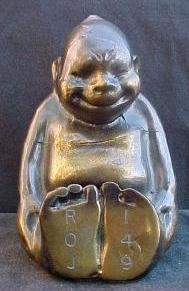
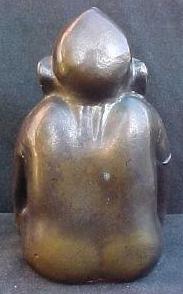
Brass Paperweight
Billiken
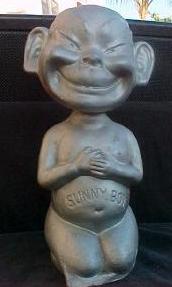
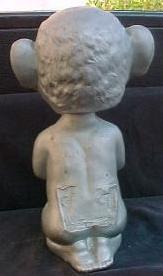
Bobbing Head
Billiken Named "Sunny Boy"
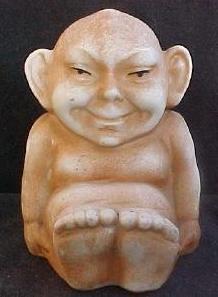
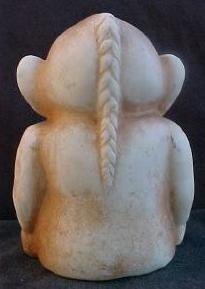
A porcelain
Billiken with a cute Rat Tail
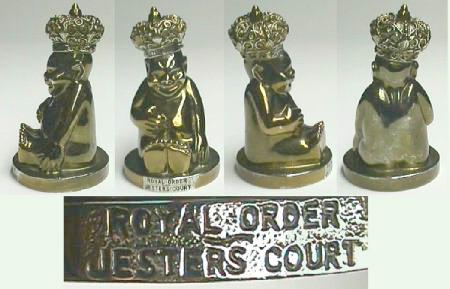
A Royal Order of
Jesters Billiken paperweight wearing his Crown

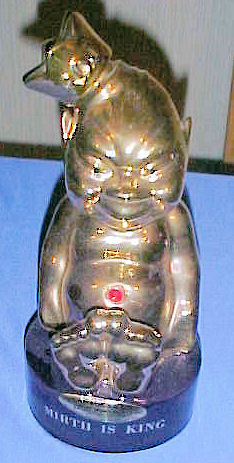
ROJ - McCormick
Whiskey Decanter Billiken

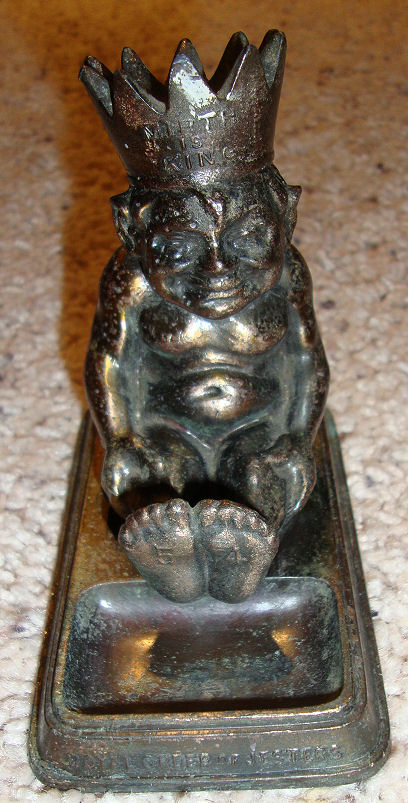
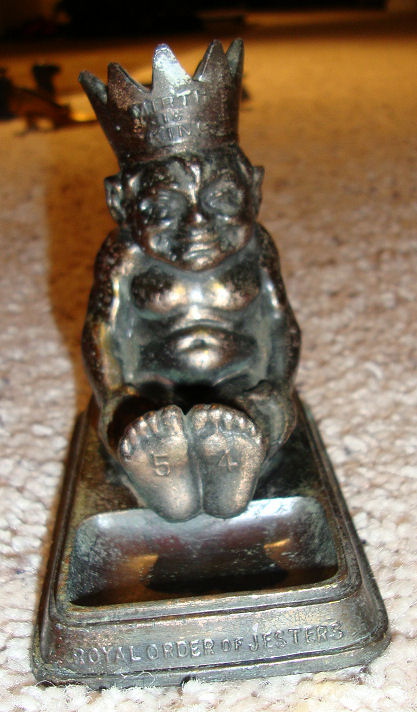
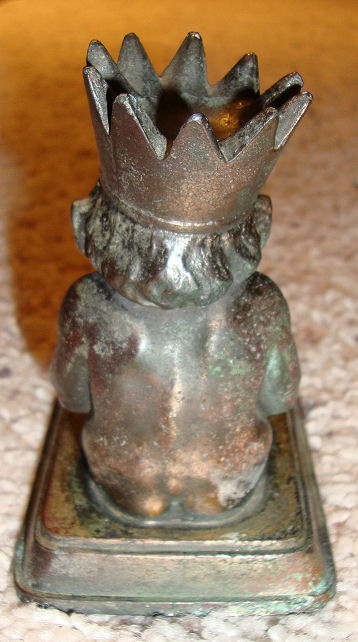
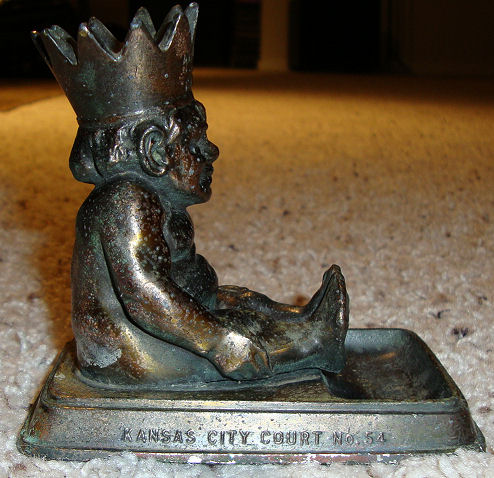
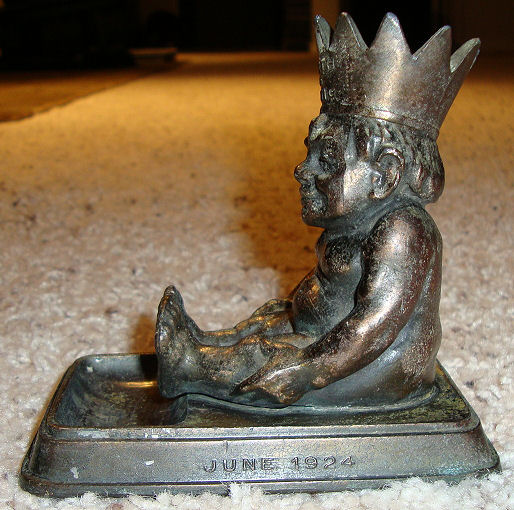
This is either a paperweight or a small ashtray. 4” deep by 2”
wise, by 4” tall. On the sides are:
“June 1924” - “Kansas City Court # 54” -
“Royal Order of Jesters” -
Back side is blank.
On the crown is “Mirth is King”. On the soles of his feet “54”.
A special "Thank You" to Brother Fred
Lowstetter for sharing pictures of his Billiken with our museum!

The
Billiken
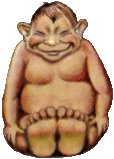
I am the god of luckiness, so
always keep me nigh.
Misfortune's frown will disappear,
at one flash from my eye.
Be sure that I am on the spot,
when projects you begin.
I am the god of luckiness. My name
is Billiken

THE ORIGIN
OF THE BILLIKEN
The most frequently quoted of the many theories of
interesting versions was that the Billiken originated in Egypt. It has been said
that the Egyptian considered the Billiken to be a symbol of good luck, and the
God of Laughter, Happiness, Merry making and Good Health. He was a patron of
beauty and guardian angel of children. They believed that the presence of the
little figure with his pointed head, pot belly, bat-like ears and whimsical
smile, when kept in their homes, would protect and insure a happy, harmonious
atmosphere. When worn, it would dispel clouds of trouble and bring joy into life
! This theory was proven to have no basis in fact. A noted archeologist of the
Cairo museum was supplied with a copy of a billiken statue. The archeologist
indicated that the figure was not of Egyptian antiquity.
The second most frequent theory was that the Billiken originated with the
Alaskan Eskimos. The Eskimos began carving Billikens in ivory sometime between
the turn or the century and the year 1913, either at Nome, Alaska, or Diomede
Island. A squat Oriental figure was commercially produced by the ivory carvers
which might have served as the Billiken original model. It was supposed that
early-day whaling vessels plying the Alaskan-Siberian coast may have carried
from the Orient a small Buddha like image which the Eskimo carvers copied and
sold to as souvenirs to enthusiastic sailors. However, the arrival of Billiken
in Alaska must have been comparatively recent since no evidence to the contrary
has been found in excavations of ancient Eskimo village sites.
A magazine article published September 1960 in Alaska Sportsman by Dorothy Jean
Ray unraveled the mystery of the Billiken. She related how she discovered by
accident who " invented " the original Billiken. On a visit to
Seattle's YE OLDE CURIOSITY SHOP she discovered a Billiken, not a carved ivory
figurine, but a big gray cast iron coin bank. Almost illegible writing on the
back turned out to be, Patent No. D-39603. An inquiry to the U.S.. Patent Office
disclosed that in 1908 a young woman, Florence Pretz of Kansas City, Missouri
was awarded a patent for a " new design " for an image called " A
Billiken ". In 1909 the Billiken was manufactured as a coin bank and as a
statuette, followed the next year by dolls. The American Doll and Toy company
made more the 200,000 dolls which were the rage for 6 months and then
disappeared. The slogan which Miss Pretz placed on the base of the plaster of
Paris statuette read, "THE GOD OF THINGS AS THEY OUGHT TO BE", a
paraphrase of Kipling's famous words from "L'Envoi": Shall draw the
things as he sees it for the God of things as they are!
The Billiken was introduced into Alaska by a store keeper on Diomede Island. He
gave the statuette to an Eskimo, Angokwaghuk, nicknamed "Happy Jack ",
who was probably one of the most famous ivory carvers of all time. " Happy
Jack " made one exactly like it with toes, belly, head and smile then made
more and they sold fast. The Eskimos have continued to carve the Billiken to the
present time. An interesting fact about today's Alaskan Billiken is the
remarkable similarity to the original Pretz design. The carvers have continued
to copy faithfully "Happy Jack's" copy. The Billiken is regarded by
the Eskimos as a good luck symbol. Luck is supposed to be generated by ownership
of a Billiken in any form. To bring greatness of health, happiness and good
fortune one must rub his belly twice a day, always thinking of others, and for
them " good things!"
In 1908, a Kansas City artist received a patent for the design, and evidently
the name Billiken was attached to it, because the design was purchased by the
Billiken Co. of Chicago, which manufactured it as a bank, a statuette and dozens
of other permutations. In fact, it was the national rage for six months.
The Royal Order of Jesters adopted the Billiken as an ambassador of Good Luck
for its organization, but the proof is in the U.S. Patent Office that the
Billiken's origin preceded the formation of the ROJ.
For those
interested, photos of a real Billiken Bank are pictured here.
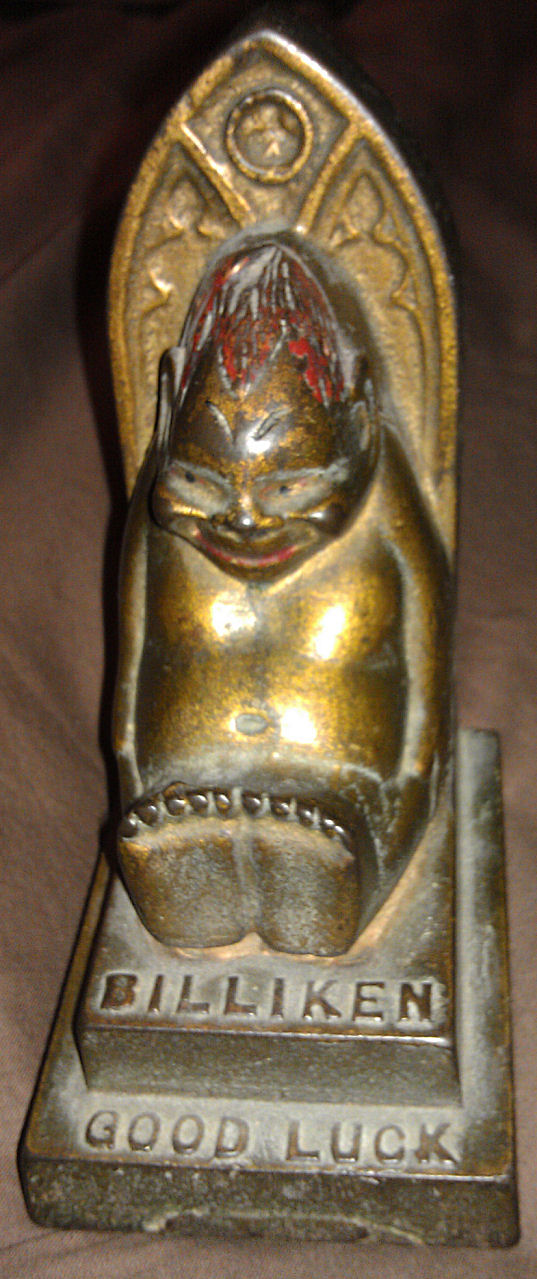
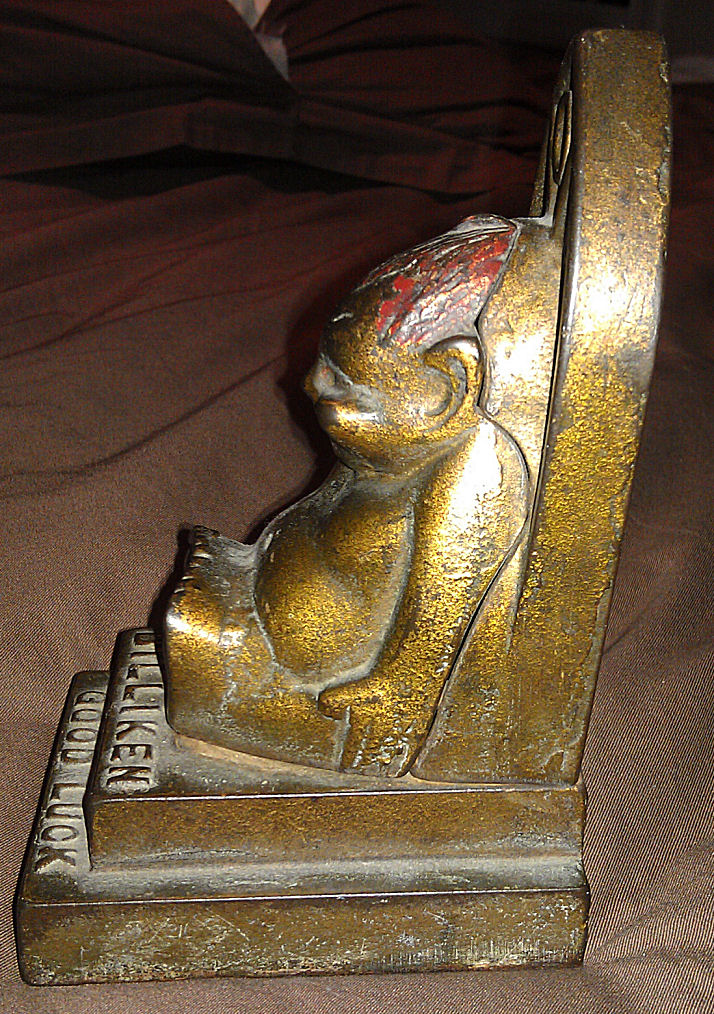
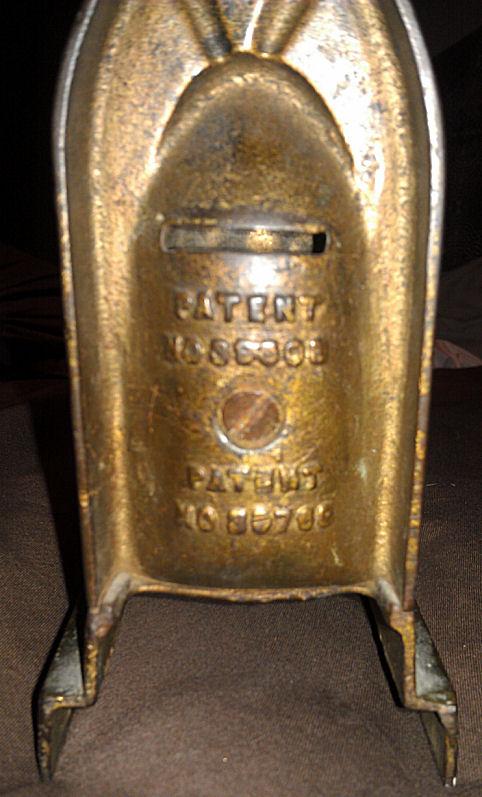
Here is a Royal
Order of Jester Ring with the Billiken
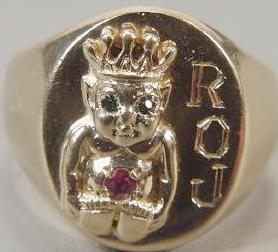
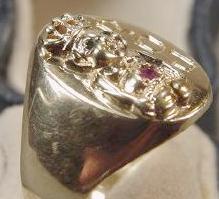
And a Billiken
Pocket Medallion.
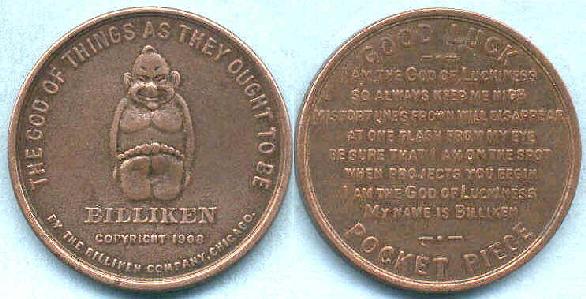
Them what
knows, knows.
Them what
don't know, don't care!

Jester's
Creed
Laugh and
the glad world laughs with you;
Weep and the
sad world will sigh!
Mirth is our
life's true elixir;
It shows
you're a "regular guy."
There's
nothing that so banishes worry,
Nor puts
such a big crimp in sin;
Nor smoothes
out the wrinkles of trouble,
like a jolly
old Jester-mans grin!
It rolls of
the years from your shoulders;
You'll
forget that you've grown to be men!
Your youth
turns once more to embrace you;
For you've
grown to be school boys again!
So, if
you've got grouches, don't bring 'em;
Its your
laugh and your joke that we need;
For mirth is
the doctor of trouble,
And
Laughter, the Jester-man's Creed!

| 